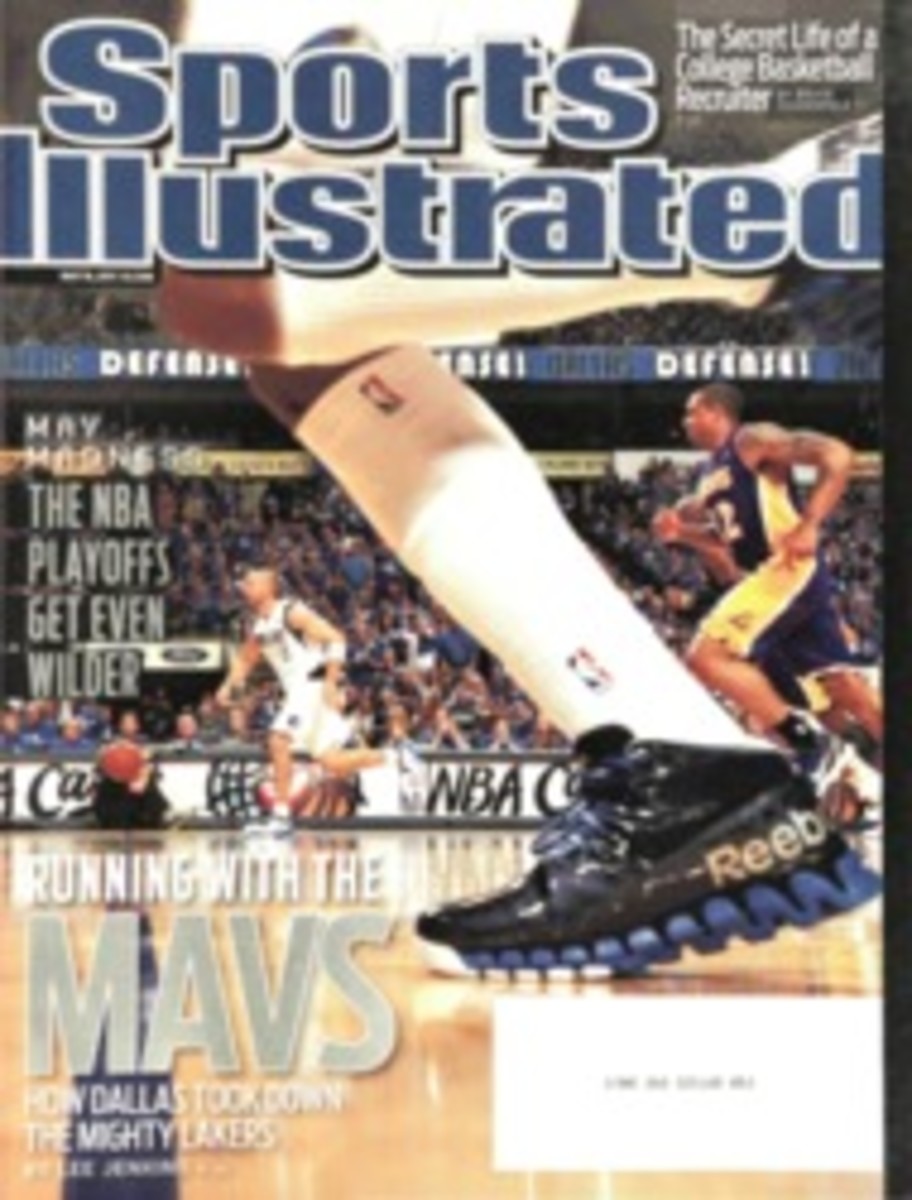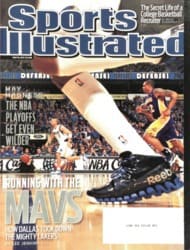
CRACKING THE CODE
WHAT MAKES THE 1-3-1 SO EFFECTIVE? AND HOW CAN A TEAM GET PAST IT? A FORMER NHL COACH GOES TO THE CHALKBOARD
As the opposition advances from its own end into the neutral zone, the five Lightning skaters assemble into a diamond formation—one player deep in the Tampa Bay zone, three abreast in front of him and one advancing on enemy territory—the base set of coach Guy Boucher's unique 1-3-1 forechecking system. Here's how it works, and how a team can break it down.
The job of the forward-most forechecker is to pressure the puck carrier into a quick decision: Either beat the forechecker one-on-one—which will likely result in a turnover—or pass to a teammate skating up the ice along the boards on his left or his right.
The new puck carrier will draw the nearest Lightning player, who will try to force the attacker to dump the puck beyond the blue line into the Tampa Bay zone, where the deep defender will easily be able to retrieve it. With the support of the middle and far forecheckers in the line of three, the deep defender can then initiate a breakout, minimizing the time spent defending inside the Lightning's zone.
By clogging the neutral zone with forecheckers, Boucher makes it extremely hard for opponents to gain the offensive zone; when Tampa is playing with a lead, the 1-3-1 can seem almost impenetrable. But it would be wrong to view it as a purely defensive system. In fact, the biggest benefit of the scheme is that it takes maximum advantage of the Lightning's potent counterattack, which is spearheaded by such talented forwards as Steven Stamkos, Vincent Lecavalier and Martin St. Louis. In a 5--3 Game 4 victory over the Capitals, Tampa Bay created seven transition scoring chances in the first period.
There are counters for the 1-3-1. The first is for the recipient of the initial pass to shoot the puck hard on goal from as far away as the red line, drawing goalie Dwayne Roloson into the play. (Washington employed this technique to great success early in Game 3; the Lightning trailed 3--2 after two periods before coming back to win 4--3.) At worst, it leads to an offensive-zone face-off. But more important, it takes away the Lightning's breakout choices because Roloson isn't a skilled passer.
The second option is for the same skater to rim the puck hard around the boards and send two forwards deep into the opposite corner to try to gain possession. But if Roloson can stop the hard-around behind the net, Tampa Bay's rear defender will be able to set up a breakout.
Another approach that hasn't yet been tried would be for the skater carrying the puck along the boards to chip it softly behind the nearest forechecker, then try to beat the deep defender to the loose puck. The other attackers would then speed into the offensive zone. This would force the Lightning skaters into footraces, and might lead to obstruction penalties as Tampa tries to prevent an odd-man rush. Precision and speed would be crucial.
ILLUSTRATION
ILLUSTRATION BY REMIE GEOFFROI

